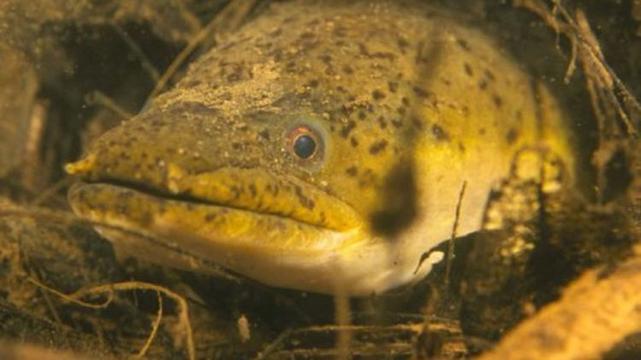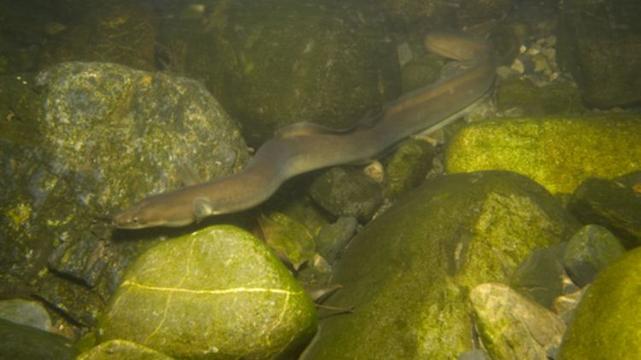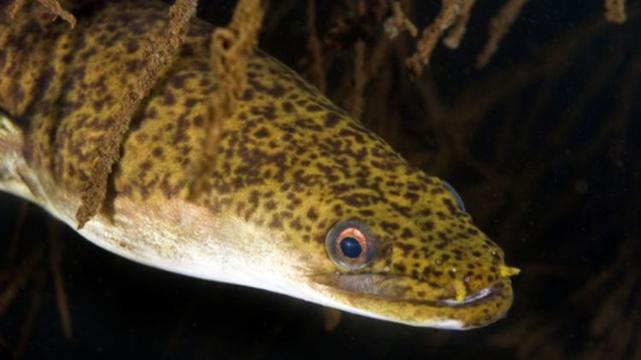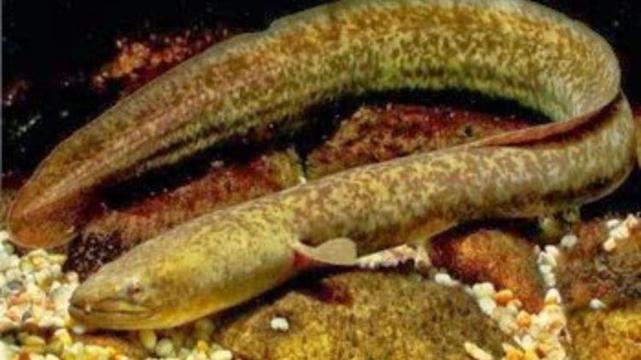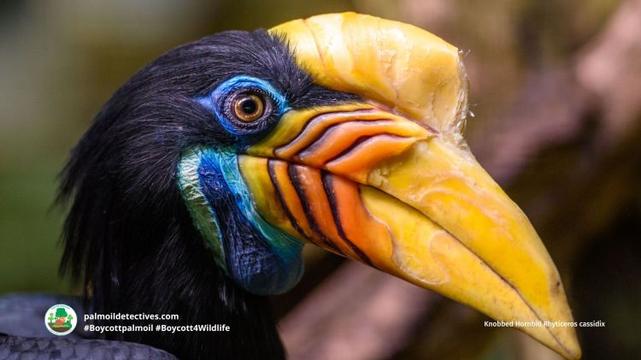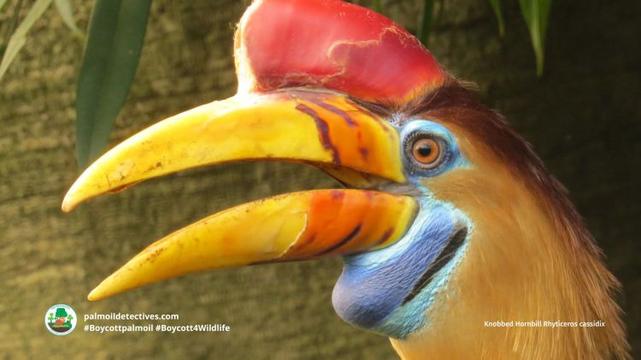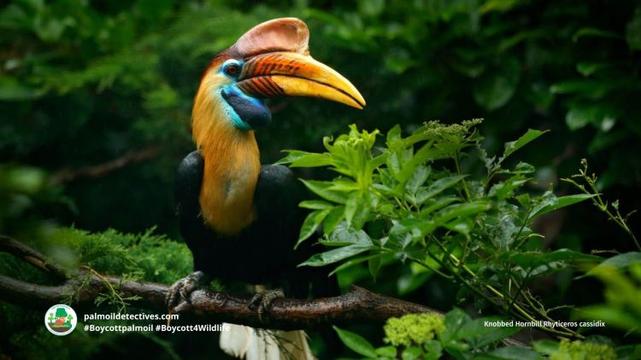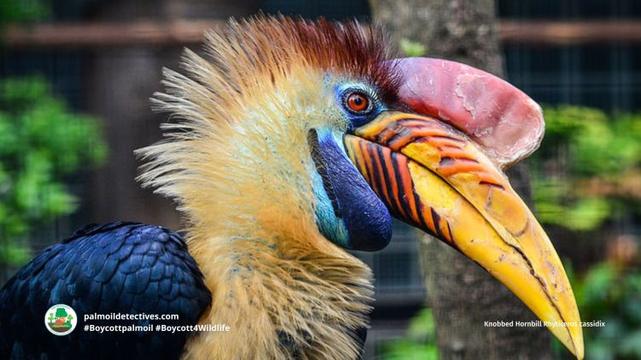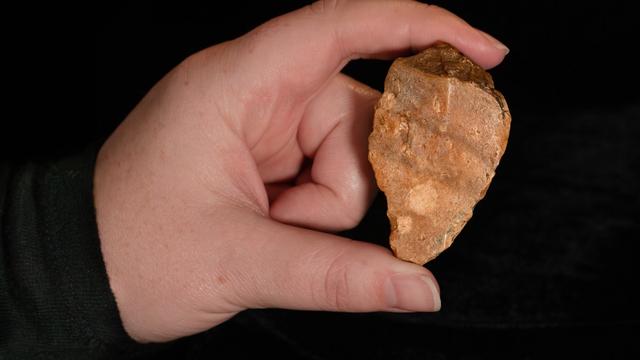Indonesian Longfinned Eel Anguilla borneensis
Indonesian Longfinned Eel Anguilla borneensis
IUCN Red List Status: Vulnerable
Locations: Found in Indonesia (Borneo, Sulawesi), Malaysia (Sabah, Sarawak), and the Philippines (Mindanao). Primarily inhabits freshwater rivers, lakes, and streams, with migrations through the Celebes Sea, Sulu Sea, Maluku Sea, and Makassar Strait for breeding.
The Indonesian Longfinned Eel Anguilla borneensis is the only plain-coloured, longfinned #eel found in Indonesia. Gliding like a shadow through the rivers of #Borneo and #Sulawesi, Indonesian Longfinned Eels (Anguilla borneensis) are elusive predators that thrive in the depths of tropical waterways. Their long, muscular bodies move with effortless precision, preying on #fish and crustaceans as they navigate the shifting currents.
Their decline is driven by rampant deforestation for palm oil expansion, hydroelectric dams blocking their migration, and the insatiable global demand for eels in the seafood trade and #pollution from #goldmining. In some areas, such as Malaysian Borneo, they have already been pushed to the brink of local extinction. Without urgent conservation measures, their migratory pathways will be severed, and their dwindling numbers may never recover. Take a stand against environmental destruction— be #vegan and #BoycottPalmOil #Boycott4Wildlife.
The Indonesian longfinned #eel is a sleek powerful #fish 🐟 Their long dorsal fin gives them agility. Threats include #goldmining and #palmoil #deforestation in #Indonesia 🇮🇩🇲🇾 #Malaysia. Help them and #BoycottPalmOil 🌴⛔️ #Boycott4Wildlife @palmoildetect https://palmoildetectives.com/2021/01/24/indonesian-longfinned-eel-anguilla-borneensis/
Share to BlueSky Share to TwitterAppearance and Behaviour
Indonesian Longfinned Eels are sleek and powerful, with elongated bodies reaching over one metre in length. Their dorsal fin runs the length of their back, giving them remarkable agility in both fast-moving currents and stagnant waters. Their skin is smooth and mucus-coated, helping them slip through tight crevices and evade predators.
Their colouration varies from olive-green to deep brown, blending perfectly with the riverbeds they inhabit. Unlike their patterned relatives, these eels have plain, featureless skin, making them more vulnerable to illegal capture for the live eel trade. Their eyes are small but highly adapted to dimly lit waters, allowing them to detect prey even in murky conditions.
These eels are catadromous, meaning they spend most of their lives in freshwater before making an epic journey to the ocean to spawn. This extraordinary migratory cycle makes them highly sensitive to human interference, as dams, pollution, and deforestation disrupt the delicate balance of their existence.
Threats
Deforestation and habitat destruction for palm oil and timber
The destruction of riverine forests for palm oil plantations, logging, and industrial agriculture has devastated the freshwater ecosystems these eels rely on. As tree cover disappears, riverbanks erode, sediment chokes the waterways, and toxic agricultural runoff poisons aquatic life. Once-pristine rivers are now polluted, fragmented, and rapidly becoming uninhabitable.
The decline of this species in the Karabakan River, Borneo is thought to have been in response to extensive exploitation of the forest alongside the river and subsequent degradation of the freshwater habitat.
IUCN Red List
Hydroelectric Dams and Migration Barriers
Indonesian Longfinned Eels must migrate between freshwater and the ocean to reproduce, but dam construction, irrigation projects, and flood control structures block their ancient routes. In places like the Poso River watershed, these barriers have already reduced eel populations, and without free-flowing rivers, their life cycle cannot continue.
Overfishing and the Global Eel Trade
Eels are a highly sought-after delicacy in Japan, China, and South Korea, where their meat is prized in traditional cuisine. While Anguilla borneensis is not yet a primary target, their plain appearance and long fins make them indistinguishable from other commercially valuable species, putting them at risk of being indiscriminately harvested.
Mining and Mercury Pollution
Gold mining in Sulawesi and Borneo is poisoning freshwater ecosystems with mercury, which accumulates in the bodies of these eels. This toxic heavy metal weakens their immune systems, disrupts reproduction, and contaminates entire food chains, making survival even more precarious.
Climate Change and Oceanic Shifts
Like all migratory species, Indonesian Longfinned Eels depend on stable ocean currents and seasonal cues to guide their journeys. However, climate change is disrupting water temperatures, altering salinity levels, and shifting currents, all of which could lead to failed spawning events and population declines.
Diet
Indonesian Longfinned Eels are opportunistic carnivores, preying on small fish, crustaceans, aquatic insects, and worms. They are primarily nocturnal hunters, using their highly developed sense of smell to track down prey in dark, murky waters. Their sharp teeth allow them to grasp and swallow prey whole, making them formidable predators in their river habitats.
Reproduction and Mating
Like all anguillid eels, Indonesian Longfinned Eels undertake an extraordinary migration to reproduce. After spending years in freshwater, they embark on a final journey to the deep ocean, where they spawn once and die. The exact location of their breeding grounds remains a mystery, but scientists suspect they spawn somewhere in the Celebes or Maluku Seas.
Females lay thousands of eggs, which hatch into transparent leptocephalus larvae. These larvae drift on ocean currents for months before transforming into glass eels and making their way back into freshwater rivers. This complex lifecycle means they are highly vulnerable to environmental disruption, with any interference in their migration causing catastrophic population declines.
Geographic Range
Indonesian Longfinned Eels are found in Indonesia (Borneo, Sulawesi), Malaysia (Sabah, Sarawak), and the Philippines (Mindanao). They inhabit freshwater rivers, lakes, and streams, with their spawning migrations taking them through the Celebes Sea, Sulu Sea, Maluku Sea, and Makassar Strait. However, due to deforestation, dams, and overfishing, their range is shrinking, and they have already disappeared from parts of Malaysian Borneo.
FAQ
Are Indonesian Longfinned Eels endangered?
They are currently listed as Vulnerable on the IUCN Red List, but ongoing habitat destruction, migration barriers, and overfishing are rapidly pushing them toward endangered status.
Where do Indonesian Longfinned Eels live?
They inhabit freshwater rivers and lakes across Borneo, Sulawesi, and Mindanao, but their survival depends on access to the ocean for spawning. Without free-flowing rivers, they cannot reproduce, leading to local extinctions.
Why are eels important to the ecosystem?
As both predators and prey, eels play a crucial role in maintaining aquatic food webs. They help control fish and invertebrate populations, keeping river ecosystems healthy and balanced.
Are eels affected by deforestation?
Yes. Large-scale deforestation for palm oil, logging, and agriculture is one of the biggest threats to their survival. Pollution, sedimentation, and chemical runoff from gold mining and palm oil plantations have turned once-thriving rivers into dead zones.
Can Indonesian Longfinned Eels be farmed?
Unlike some other eel species, A. borneensis is not yet widely farmed, but with the collapse of other eel populations, they could become the next target for commercial exploitation. Protecting their wild populations is essential, be #vegan for them!
Take Action!
Indonesian Longfinned Eels are disappearing due to deforestation, dam construction, overfishing, and pollution. Their survival depends on protecting free-flowing rivers and pristine rainforests from destruction.Use your wallet as a weapon—#BoycottPalmOil #Boycott4Wildlife every time you shop. Fight for their survival before it’s too late.
Further Information
Arai, T., Chino, N., & Le Quang, D. (2013). Migration and habitat use of the tropical eels Anguilla marmorata and A. bicolor pacifica in Vietnam. Aquatic Ecology, 47(1), 57–65. https://doi.org/10.1007/s10452-012-9424-x
Inger, R. F., & Chin, C. K. (1962). The freshwater fishes of North Borneo. Fieldiana Zoology, 45(1), 1-268. https://biostor.org/reference/11287
Muthmainnah, D., Suryati, N. K., Mulyani, Y. S., & Pamungkas, Y. P. (2020). Fate of Anguillid eel fishery of Indonesia during the COVID-19 pandemic: Anguillid eel resource in Indonesia (Special Report). SEAFDEC/IFRDMD. https://www.researchgate.net/publication/349052661
Pike, C., Crook, V., Jacoby, D. & Gollock, M. 2020. Anguilla borneensis (amended version of 2019 assessment). The IUCN Red List of Threatened Species 2020: e.T198973A176496889. https://dx.doi.org/10.2305/IUCN.UK.2020-3.RLTS.T198973A176496889.en. Downloaded on 24 January 2021.
Wouthuyzen, S., Aoyama, J., Sugeha, H. Y., Miller, M. J., Kuroki, M., Minegishi, Y., Suharti, S. R., & Tsukamoto, K. (2009). Seasonality of spawning by tropical anguillid eels around Sulawesi Island, Indonesia. Naturwissenschaften, 96, 153–158. https://doi.org/10.1007/s00114-008-0467-6
You can support this beautiful animal
There are no known conservation activities for this animal. Share out this post to social media and join the #BoycottPalmOil #Boycott4Wildlife on social media to raise awareness
Indonesian Longfinned Eel Anguilla borneensis
How can I help the #Boycott4Wildlife?
Take Action in Five Ways
1. Join the #Boycott4Wildlife on social media and subscribe to stay in the loop: Share posts from this website to your own network on Twitter, Mastadon, Instagram, Facebook and Youtube using the hashtags #Boycottpalmoil #Boycott4Wildlife.
2. Contribute stories: Academics, conservationists, scientists, indigenous rights advocates and animal rights advocates working to expose the corruption of the palm oil industry or to save animals can contribute stories to the website.
Mel Lumby: Dedicated Devotee to Borneo’s Living Beings
Anthropologist and Author Dr Sophie Chao
Health Physician Dr Evan Allen
The World’s Most Loved Cup: A Social, Ethical & Environmental History of Coffee by Aviary Doert
How do we stop the world’s ecosystems from going into a death spiral? A #SteadyState Economy
3. Supermarket sleuthing: Next time you’re in the supermarket, take photos of products containing palm oil. Share these to social media along with the hashtags to call out the greenwashing and ecocide of the brands who use palm oil. You can also take photos of palm oil free products and congratulate brands when they go palm oil free.
https://twitter.com/CuriousApe4/status/1526136783557529600?s=20
https://twitter.com/PhillDixon1/status/1749010345555788144?s=20
https://twitter.com/mugabe139/status/1678027567977078784?s=20
4. Take to the streets: Get in touch with Palm Oil Detectives to find out more.
5. Donate: Make a one-off or monthly donation to Palm Oil Detectives as a way of saying thank you and to help pay for ongoing running costs of the website and social media campaigns. Donate here
Pledge your support#Borneo #Boycott4wildlife #BoycottPalmOil #deforestation #eel #fish #ForgottenAnimals #goldmining #Indonesia #IndonesianLongfinnedEelAnguillaBorneensis #Malaysia #palmoil #Philippines #pollution #Sarawak #SouthEastAsia #Sulawesi #vegan #VulnerableSpecies
